A “Week” with the Church
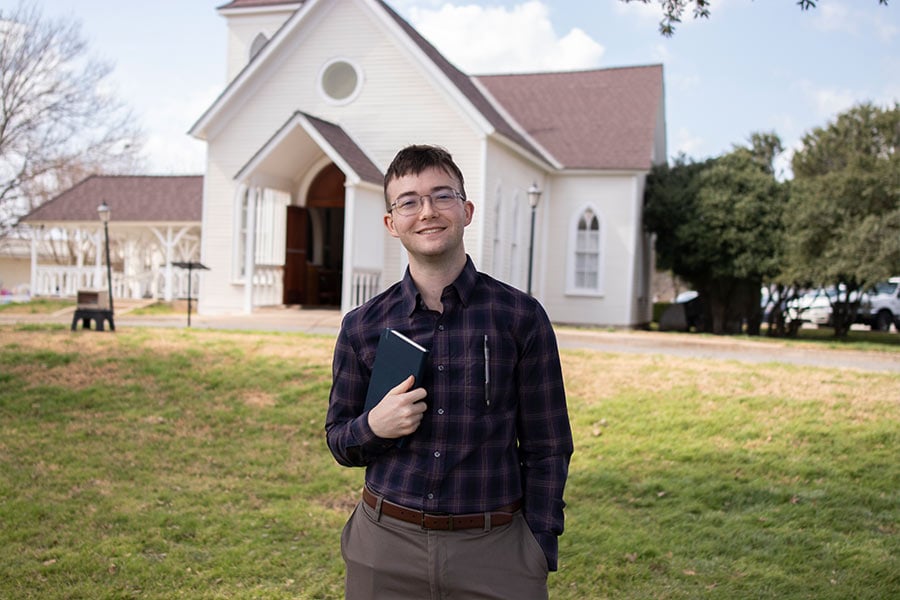
Walker Price stands in front of Christ the King Anglican Church at the kick-off of 40 Days for Life. (NTC/Jayme Donahue)
When we say the word “church”, what do we mean? The odds are most of us use it to reference the structure within which worship takes place. In the context of Catholicism, this means the Mass and, even more specifically, Sunday Mass. In this way, the prevailing concept of “church” has become curiously restrained, tacked down to a particular day of the week where, I would wager, a great number of people are content keeping it, even if subconsciously.
This definition is unnecessarily limiting, however, and I would argue, deleterious overall to the health of the Church as a Body; as a living, breathing, supernatural organism which has been entrusted with an equally supernatural mission.
This month, I had the opportunity to attend roughly a week’s worth of “extracurricular” Church activities, if you will. The first was a sidewalk prayer event organized by 40 Days for Life, the second a diocesan Lenten Discernment for Men, the third was daily Mass followed by Adoration, the fourth Stations of the Cross, and the fifth a Saturday retreat organized by Young Catholic Professionals. Each of these attested to the true nature of the Church as a preeminent creature of God; a Body made up of many bodies, called to a divine mission. It is my hope that, by offering my reflections on these events, I may further expound upon the vital significance of the Church as an active organism in the world.
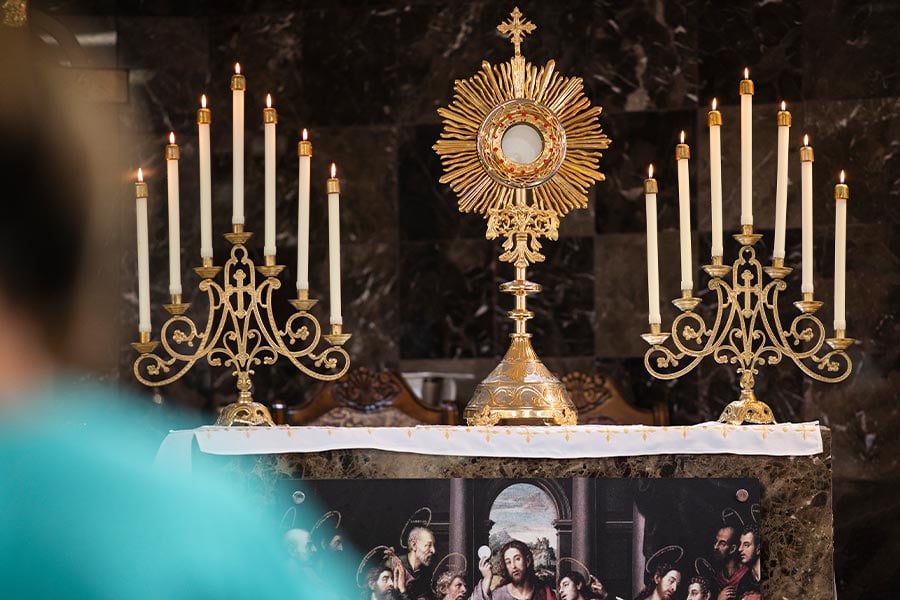
The Holy Eucharist in the monstrance at St. Peter Catholic Church. (NTC/Juan Guajardo)
I’ll start with daily Mass. As Catholics, we are obligated to attend Mass every Sunday. Going back to what I mentioned above, this is where I feel many are content to leave the concept of the Mass; it’s just what we must do on Sundays. When seen from this (erroneous) perspective, it becomes easier for someone to assume that there isn’t much difference between Mass and any other service conducted in any other church. This is a dangerous viewpoint. The Holy Sacrifice of the Mass is much, much more than just one out of the myriad Sunday worship services. It is a continual prayer of the Church, offered each and every day of the year (the only exception being Good Friday), in perpetual re-presentation of Christ’s death on the cross. When one is present at daily Mass, this all-encompassing reality becomes crystal clear. At the daily Mass I attended, there was no music. The only sounds were the words of the priest, the responses of the congregation, and the ringing of the altar bells at the Consecration and Elevation. In this much simpler, pared-down format, I felt it was easier to concentrate on the content of what is being said and performed at the altar. The full weight of it begins to settle deeper within you. You begin to realize that the Mass isn’t just for Sundays; it is for all days.
After the dismissal, I stayed for Adoration. Adoration is another Church practice which I feel suffers from misunderstanding, even in Catholics. Questions you might ask yourself while sitting in the pew after the monstrance has been taken out and the Host exposed could include: “Now what?”, “Do I just look at the Host?”, “What do I do?”. Rather paradoxically, “doing” may not be altogether the proper description of what one “does” during Adoration. It is meant to be a unique experience of the presence of God, a perfect setting for meditation and contemplation. Perhaps the best analogy that I can think of for the sensation I felt while sitting in front of the monstrance is the congenial warmth one feels when spending time with a close friend, one whom you know you could tell anything and voice any concern to without fear of condemnation. After spending around an hour absorbed by the best company in the universe, I left the physical church feeling refreshed and peaceful, sensing that I had been equipped with a newly polished set of spiritual armor to face whatever threats a member of the Body of Christ might face.
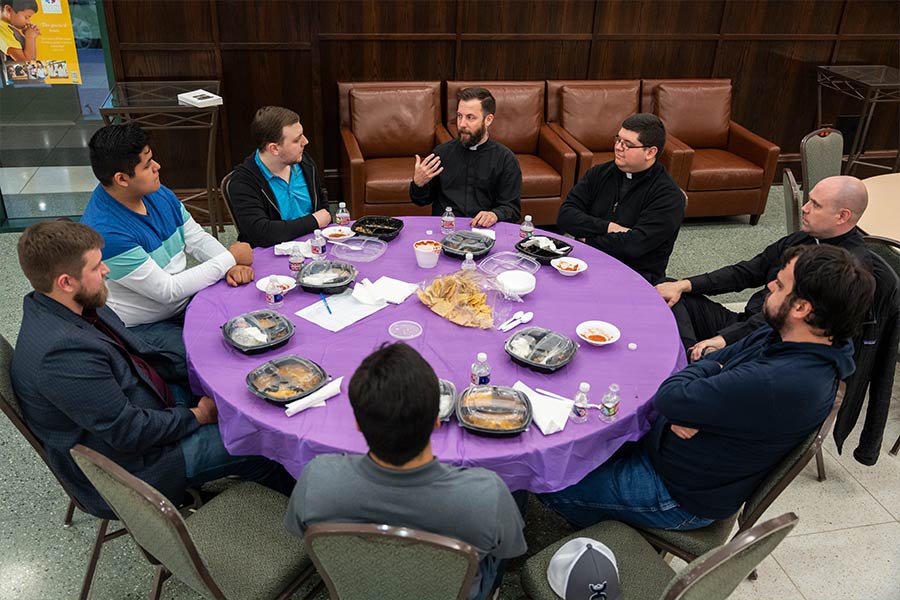
Father Joe Keating and seminarians from the Diocese of Fort Worth lead a discussion on discerning one's vocation on March 17, 2022 at St. Patrick Cathedral. The event began with a Holy Hour of Adoration followed by dinner and a discussion on prayer, priestly vocations, and discernment. (NTC/Juan Guajardo)
On the evening of Thursday, March 10, I attended a diocesan Lenten Discernment for Men, which provides an opportunity for likeminded men to have their questions regarding the priesthood answered, specifically through discussion with a priest. The event was held at 6 p.m. at St. Patrick Cathedral, starting with a holy hour in the sanctuary. I was the first to arrive, allowing me to have the unique experience of sitting by myself in the dim cathedral for a few minutes while Father Maurice Moon, who was hosting the event, went to turn on the lights. The wavering red glow from the votive candles mingling with the evening light filtering through the stained-glass windows created a surreally beautiful atmosphere, one I was almost sorry to see dispelled when the lights came on.
The other participants filtered in as the holy hour commenced, which allowed for a time of quiet reflection. One of the sounds which stood out to me during this period was the occasional whoosh of a car passing by the front of the cathedral. I thought of the profound contrast between our little world inside the sanctuary, where all sat contemplating the presence of God, and that of those cars outside the walls, entirely ignorant of what was happening. After the holy hour ended, I walked along with Fr. Moon and the others to the parish hall for dinner and discussion. It was a great opportunity to talk one-on-one with a priest regarding topics like the seminary, as well as how all of us had been positively impacted by a priest at some point in our lives. We concluded our time by reciting Evening Prayer. The Church is always in need of priests to help carry out her calling to evangelize the world, especially in these times. If you feel you may be called to the priesthood, I wholeheartedly recommend attending one of these events.
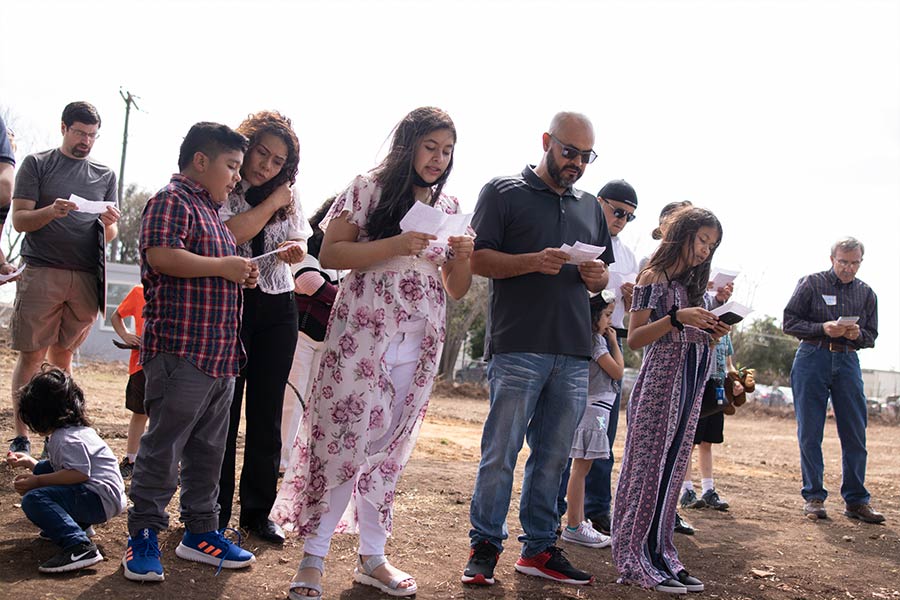
Attendees of the spring kickoff for 365 Days for Life pray for the end to abortion outside Whole Women's Health March 5th. (NTC/Jayme Donahue)
Until last month, I had never attended a pro-life event. Since attending the 40 Days for Life Kickoff on Saturday, March 5, I can’t help but feel a certain sense of guilt. You can say you oppose the atrocity that is abortion and all the pain and bereavement that accompanies it, but actually leaving your house and standing in front of an abortion facility is another thing entirely. The full reality of the thing slaps you in the face.
While standing and talking with some of the event organizers beforehand, the sense of profound love in the room struck me. I felt I was among individuals who all knew full well the significance of their mission, and it was palpable. After this period of fellowship in the parish hall of Christ the King Anglican Church, who were partners in the event with 40 Days for Life, we all went outside to the lawn in front of the beautiful wooden sanctuary for a series of speeches. It was very windy that day, making things somewhat difficult for both the speakers and the listeners, yet I could not help but scribble into my notebook that the wind was at our backs. Once the speakers had finished, all of whom were wonderful, our whole party walked not a few hundred feet down the road to the sidewalk by the abortion facility where we prayed. It was a sobering experience; one that highlights the importance of our designation as the “Church Militant” — God’s “army” here on earth.

Alex Lopez, president of the YCP Fort Worth Chapter, leads a talk. More than two dozen young adult Catholics from across the Diocese of Fort Worth came together for the Young Catholic Professionals Lenten Retreat on March 12, 2022 at St. Michael Parish in Bedford. (NTC/Juan Guajardo)
On the Saturday following, I participated in a Lenten retreat organized by the Young Catholic Professionals Fort Worth Chapter. I had already been planning on coming to one of their events, so this retreat being on my itinerary was serendipitous. YCP provides opportunities for networking and fellowship among Catholics in their twenties and thirties. This was one such event.
It was held in the parish hall of St. Michael Parish in Bedford from 2 to 6 p.m., providing ample time for speakers, group discussion sessions, and personal prayer. I found myself to be in the company of extraordinarily faith-filled people at or near my own age which, sadly, I fear is becoming less and less common an experience. It was refreshing. In the breakout sessions, we discussed topics ranging from what our plans were for Lent to how each of our unique personalities could be affecting how we relate to God. The retreat concluded with Mass which, in a way, felt like the only way it could have ended.
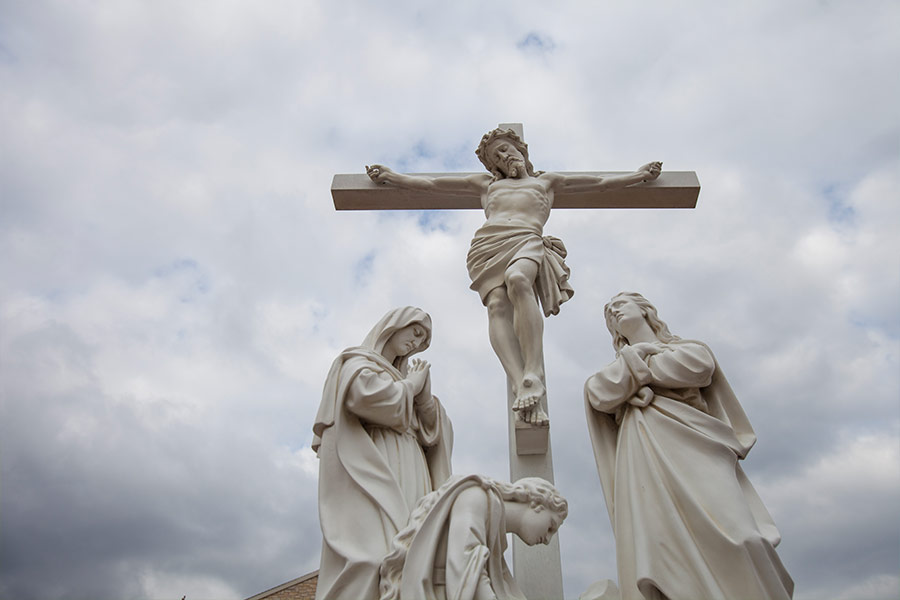
Stations of the Cross at St. Elizabeth Ann Seton in Keller. (NTC/Juan Guajardo)
Finally, I went to Stations of the Cross, which I probably haven’t done since elementary school, where it was something in which all the students participated every Lent. The Stations are one of my favorite ceremonies of the Church. The meditations on Christ’s painful journey to Golgotha, punctuated by the mournful notes of the Stabat Mater, paint an evocative picture of Jesus’ suffering that cannot fail to stir the soul. Taking the time to contemplate the Passion in this way is immensely humbling. It puts into perspective the sufferings of our lives, perhaps causing us to feel pangs of shame for those instances where we’ve complained about something comparatively petty. Alongside the Sorrowful Mysteries of the Rosary, I can scarcely think of a more appropriate meditation for the season of Lent.
As members of Christ’s Body, the Church, we are called to embody His presence in the world today. Our hands and our feet can only bring Him to a suffering society such as the one in which we live if we put them to use. Just as is the case with any other set of tools, except ours are reserved for a sacred purpose. The coronavirus pandemic may have kept us more isolated than most of us have ever been, but God’s army is needed now perhaps more than ever. We must show this world through our actions that Christ is still present with us, and that God the Father continues to speak Creation into existence out of pure, unbridled love.
A good way to start renewing our common mission is to take full advantage of the opportunities for holiness with which the Church presents us, not only checking off a box on Sunday. When the Mass is said in Latin, these words mark the dismissal, and I find their translation very poignant: “Ite missa est.” Go, you are sent.
